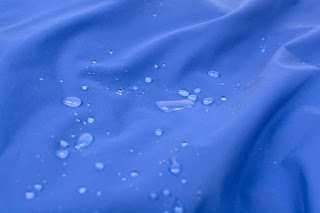What should we look for in a waterproof running jacket?
The first question must focus on how the jacket will be used and what your specific needs are.
If you run hot while exercising, you’re not going to want anything too stuffy, but rather something with decent breathability and ventilation.
You can easily layer up with warmer base layers underneath, too, so you don’t need to worry about getting any warmth from your waterproof running jacket. That way, you can add or remove layers as you get cold or hot.
So what should you look for when choosing a waterproof running jacket? Well, first and foremost, it needs to keep the weather out. Read more about that in the next section of this article.
Given the nature of running, a good jacket will also be breathable or allow you to ventilate and regulate your temperature. To that end, vents, mesh-lined pockets and breathable fabrics can be a godsend.
Hoods are down to personal preference, but if the jacket has one we like it to fit close to the head so it doesn’t blow around. If you can roll it down and fasten it away, even better.
We also like to see elasticated cuffs, a close-fitting hem (often aided by adjustment points), hi-vis detailing and a pocket for essentials (though this is less important if you use a pack/belt while running).
That aside, it also has to fit well so it doesn’t catch the wind, otherwise it can feel like a parachute on really breezy runs.
Weight and pack size is key so you can stow your jacket away if it stops raining or you overheat, while we also like it to look good – obviously!
Of course, you may just want something super lightweight to chuck in a pack as mandatory kit at a race – just make sure you check the requirements for your race first, as some races will stipulate taped seams and a minimum hydrostatic head rating.
What makes a jacket waterproof?
Most waterproof running jackets will use either a waterproof membrane, a durable water repellent (DWR) coating or a combination of both.
That membrane is usually bonded to the inside of the jacket, which will form part of a two or three layer (or sometimes 2.5 layer) system. Often, these membranes are provided by a third-party company such as Gore-Tex (widely regarded as industry leaders) eVent and Pertex.
DWR coating
Brands typically then apply a DWR coating to the outside to ensure water beads up on the surface of the jacket.
The DWR coating will wear away over time, particularly when it gets dirty or is faced with a lot of abrasion, such as from a running pack.
When that happens, the outer fabric may ‘wet out’. That means that water soaks into the fabric on the outside of the jacket, though doesn’t go through the membrane (if the jacket in question has one). As a result, the jacket can start to feel cold, heavier and breathability can suffer.
To avoid this happening, DWR coatings needs to be reapplied periodically with a special wash or spray, such as Nikwax or Grangers.
For a jacket to be truly waterproof, its seams need to be sealed. This typically comes in the form of taped seams, which stop any water from passing through.
Hydrostatic head
When looking at waterproof running jackets, you’ll probably see a figure (in millimetres) quoted in the product description. That’s probably the hydrostatic head (sometimes written as HH), which measures how waterproof a fabric is.
To be classed as waterproof, a fabric should have a minimum rating of 1,500mm, though most waterproof kit will typically have hydrostatic head ratings of 5,000m upward, and most waterproof jackets will have a rating of 10,000mm. That last figure is a good benchmark when searching for your jacket.
What about zips?
One final note… due to the very nature of them, zips are rarely described as 100% waterproof. Many utilise DWR coatings and waterproof materials in their construction, and do a fine job of keeping the elements out, but they can still be a weak point in weather protection when in particularly bad conditions.
As such, we like to see a storm flap behind the zip to protect against any water ingress.








Comments
Post a Comment